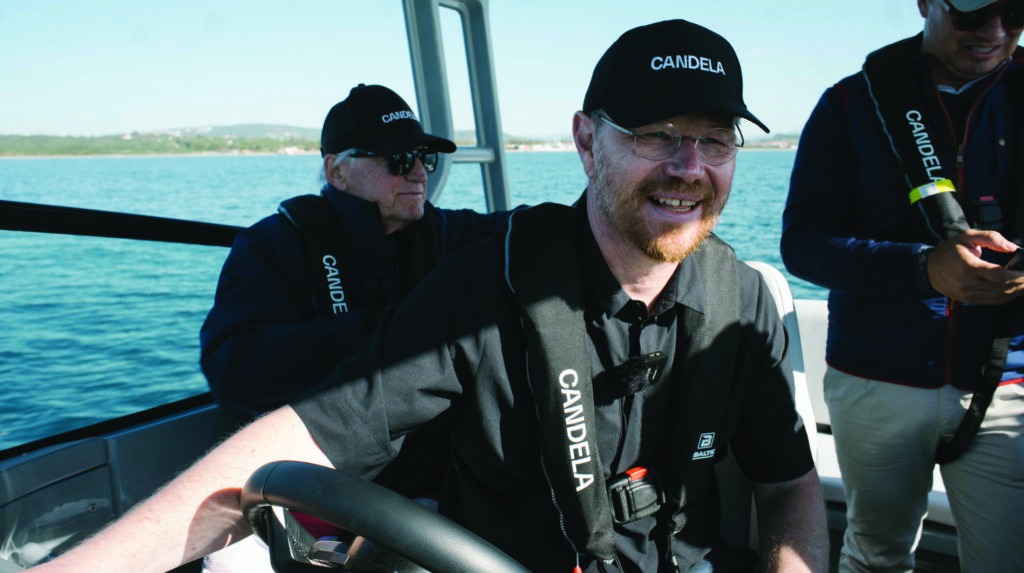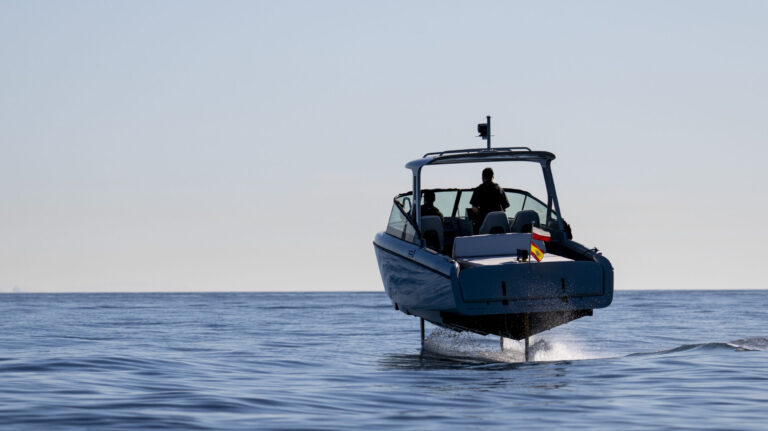Back in May, a Swedish crew successfully piloted a Candela C-8 foiling electric boat from Europe to North Africa – a feat that the Candela team says marks the first-ever intercontinental journey by an electric vessel. The vessel, a Candela C-8 Polestar Edition, completed the voyage from Sotogrande in Spain to Ceuta in North Africa (a distance of 24 nautical miles) in just over one hour – comparable to a conventional fast ferry. After recharging, the vessel returned to the Spanish mainland the same day.
Candela’s now recognizable twin hydrofoils lift the C-8 above the water, reducing drag and cutting energy consumption by 80% over conventional fast vessels. This enables the long electric range needed to cross the Strait of Gibraltar. The record-setting voyage was undertaken to demonstrate the potential of Candela’s new P-12 electric hydrofoil ferry – a vessel design that the Candela team believes can deliver clean, cost-efficient transportation along the Spanish coast and across the Strait. The majority of trips along this vital corridor are conducted by large, diesel-powered car ferries that primarily serve major hubs. Candela aims to complement these services by introducing fast, sustainable direct routes that expand access for underserved coastal communities.

“There’s a clear need for additional fast, clean and efficient travel options across the Mediterranean – and for direct lines that wouldn’t be economically viable with larger, conventional vessels,” said Gustav Hasselskog, CEO of Candela and pilot during the May crossing. “We can help meet this demand, working alongside existing operators and ferries to boost connectivity and cut emissions – not just across the Strait but also along the coast, for example connecting cities along the Costa del Sol.”
The Gibraltar Strait is known for strong currents and unpredictable seas, making conditions challenging for smaller vessels. This made it an ideal test for Candela’s computer-controlled hydrofoil system, which uses sensors to detect waves, wind and current, with the system automatically adjusting the hydrofoils up to 100 times per second.
“It functions much like the flight controller of a modern jet fighter, and works very well,” added Hasselskog. “We couldn’t feel the waves, even though the camera boat was bouncing around quite a bit.”
During the voyage, the Candela C-8 used just 40kWh of energy – about €8 (US$9) worth. By comparison, the similarly sized gasoline-powered camera boat burned 50 liters of fuel, costing around €90 (US$106).
This article was originally published in the September 2025 issue of Electric and Hybrid Marine Technology. To view the magazine in full, click here.



